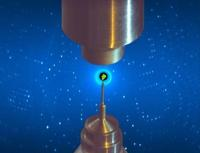Speaker
Description
The outbreak of the coronavirus disease (COVID-19) caused by the coronavirus SARS-CoV-2 spread to every continent affecting the global health and economy. The first two open reading frame of the SARS-CoV-2 genome are translated into two polyproteins.These are cleaved into 16 non-structural proteins (nsp1-nsp16), which are essential for viral replication and transcription [1].Among these, nsp14 is a bifunctional protein.Its N-terminal domain possesses exoribonuclease (ExoN) activity and plays a proofreading role for prevention of lethal mutagenesis, whereas the C-terminal domain functions as a guanine-N7 methyl transferase (N7-MTase) for mRNA capping [2].The activity of the ExoN domain of nsp14 is significantly increased upon interaction with the nsp10 protein. The nsp10 is a single domain protein [3], which stimulates ExoN and the N7-MTase activity of the nsp14.
Within this context, SANS and SAXS experiments may play a key role to investigate structural and conformational features of the SARS-CoV-2 nsp10-nsp14 proteins at their physiological temperature and conditions.By using both techniques we could get information on the hydration shell of the proteins and the amount of the oligomeric species as well.With this goal in mind, we are going to perform a SEC-SAXS experiment (P12,Petra III,Hamburg) and a SANS experiment (KWS2,MLZ,Garching).
Ref.:
[1]J.Ziebuhr,Curr.Top.Microbiol.,287,57(2005)
[2]L.Eckerle,J.Virol.81,12135,(2007)
[3]A.Rogstam,Int.J.Mol.Sci,21,7375(2020)

